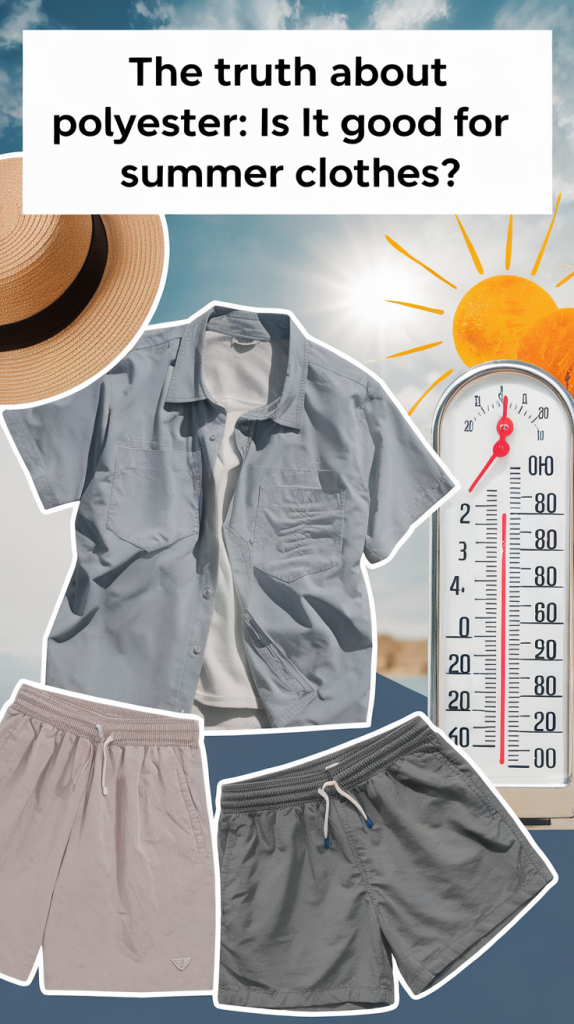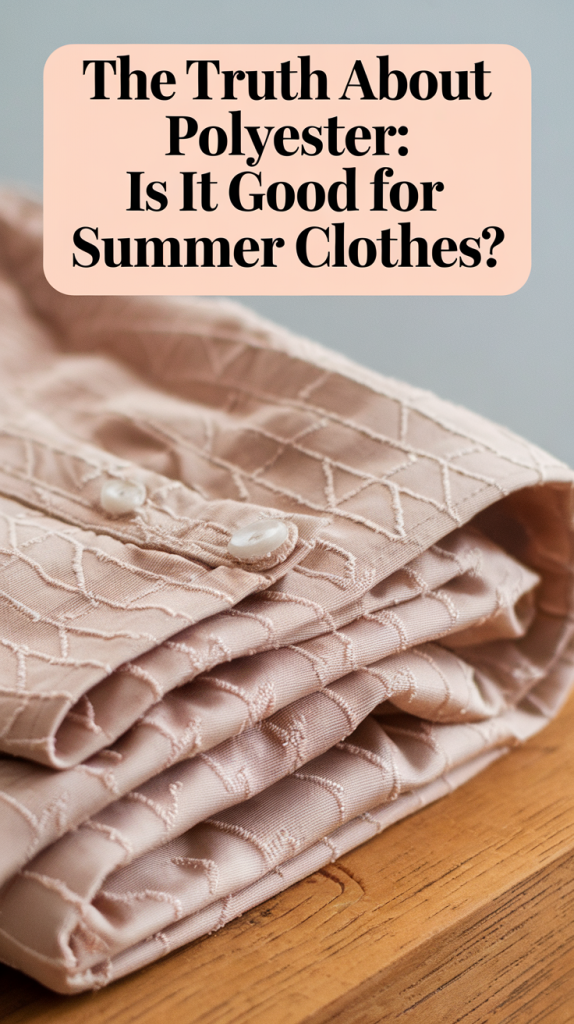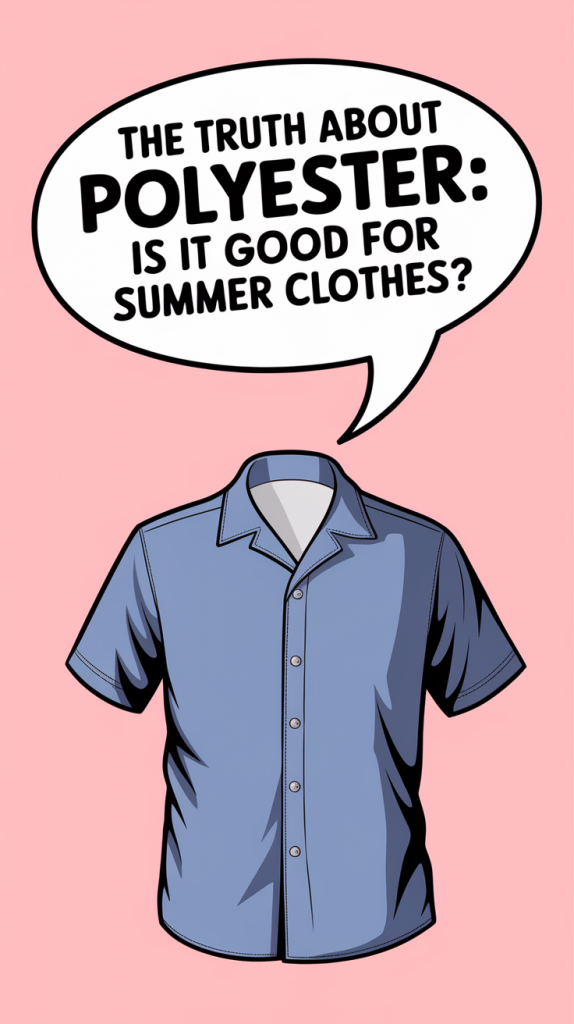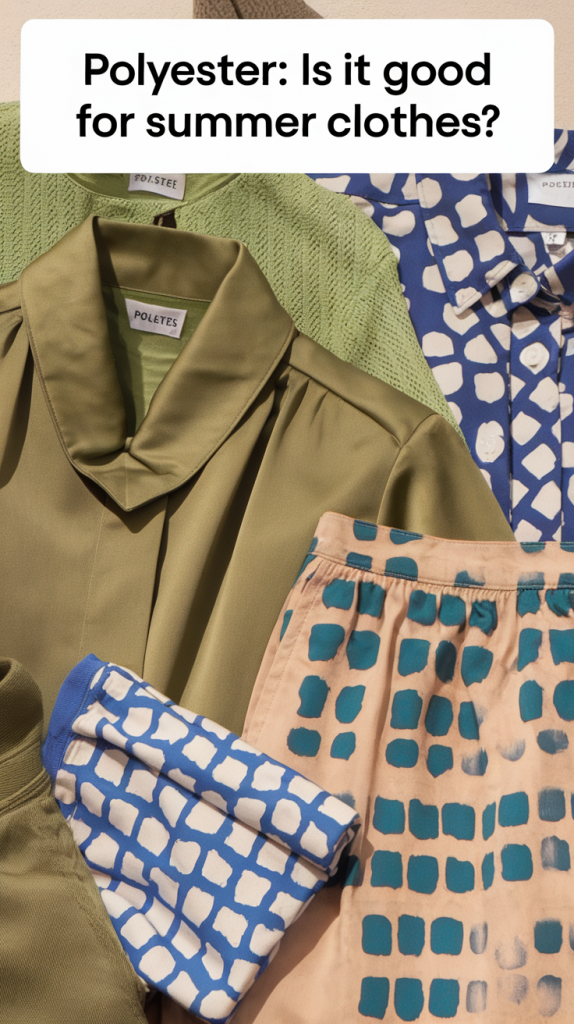The Truth About Polyester in 2025: Is It the Right Choice for Summer Clothes?
Around 60% of American clothing that goes on sale consists of polyester or blended polyester fibers. This percentage of polyester clothing in the U.S. raises intriguing questions, particularly when people begin to wear less clothing during the hot summer months. The affordability of polyester in clothing creates a wardrobe wonder, yet it could translate into wet discomfort throughout your day.
The following piece provides a full explanation of polyester use during summer 2025. Read expert guidance coupled with precise advantages and disadvantages and get recommendations about polyester usage throughout this article. The following article reveals all the information you need about polyester use during the summer of 2025, whether you are making vacation fashion choices through online shopping platforms or experiencing sweaty shirts.
Who should read this?
- Shoppers who buy affordable summer clothes online (Shein, Temu, Amazon)
- Active people who rely on sportswear in hot weather
- Parents shopping for kids’ clothing
- Anyone with sensitive skin or who sweats a lot in warm weather

What Is Polyester and Why Is It Everywhere in 2025?
The petroleum-source chemicals function as basic material to produce synthetic polyester fibers. The synthetic material emerged in mid-century and became popular because of its durable structure and affordable price combined with its smooth appearance.
Major retail stores in the United States display extensive polyester clothing displays in every location. Brands consider it a valuable material because its manufacture and upkeep remain smooth and inexpensive at scale. Customers appreciate polyester products due to their inexpensive pricing and broad variety of colors and forms that are available everywhere.
What makes polyester so common?
- Durability: Lasts longer than many natural fibers.
- Color Retention: Doesn’t fade easily, even with washing or sun exposure.
- Cost-effective: Keeps prices down for both brands and consumers.
But how does it perform in the heat?
When Polyester Works for Summer: The Real Benefits
1. Quick-Drying and Low Maintenance
Whether you’re heading to the beach, gym, or on a hike, polyester could be your ideal companion. It dries quickly, doesn’t wrinkle, and holds its shape well. That’s why it’s often used in
- Swimwear
- Athletic wear (Nike Dri-FIT, Adidas Climalite)
- Travel outfits
2. Lightweight Feel (With a Catch)
Modern polyester blends can be surprisingly lightweight. Some even mimic the softness and breathability of cotton or rayon.
3. Innovative Blends and Tech Fabrics
Polyester isn’t what it used to be. In 2025, innovations like CoolPoly, Dry-Fit, and Recycled PET fabrics offer:
- Better airflow
- Moisture-wicking properties
- Less odor retention
“Not all polyester is created equal. Look for moisture-wicking tech when shopping for summer wear,” says Jennifer Lee, textile engineer at the Sustainable Fabric Institute.

The Downside: Why Polyester Might Be a Summer Mistake
1. Breathability Issues
Classic polyester is not breathable. If you’re wearing a tight polyester shirt in 90°F heat with 70% humidity, you’re setting yourself up for discomfort. Sweat gets trapped. Skin can get irritated.
2. Skin Reactions and Heat Retention
Polyester traps heat against the body and doesn’t absorb moisture well. This can result in:
- Body odor
- Heat rashes or irritation
- Feeling clammy or sticky
3. Environmental Concerns
Petroleum is the source of polyester, which takes decades, if not centuries, to decompose. Washing it also releases microplastics into the water supply.
Think about this: Are you willing to sacrifice comfort and sustainability for the sake of convenience?
When Polyester Is a Yes (And When It’s a No)
Here’s a quick cheat sheet to help you decide:
| Situation | Polyester: Yes or No? | Why? |
|---|---|---|
| Gym session | ✅ Yes | Wicks moisture, lightweight |
| Beach day | ✅ Yes | Dries quickly, resists salt/sand |
| Outdoor BBQ or picnic | ❌ No | Poor breathability, traps heat |
| Running errands in hot weather | ❌ No | Can feel sticky, retains odor |
| Layer under blazer (A/C indoors) | ✅ Yes | Comfortable with indoor cooling |

The Best Alternatives to Polyester for Summer 2025
When comfort is your top priority, consider these breathable options:
1. Organic Cotton
- Breathable
- Hypoallergenic
- Widely available in stores like Target and Old Navy
2. Linen
- Ultra-breathable
- Natural cooling effect
- Perfect for relaxed fits
3. Bamboo Viscose
- Naturally antibacterial
- Absorbs sweat well
- Often softer than cotton
4. Rayon and Modal
- Silky feel
- Better airflow than polyester
- Stylish drape for dresses and tops
“In summer, I always recommend my clients to go for linen blends or bamboo fabrics over polyester,” says Clara Miles, fashion stylist based in Los Angeles.
How to Shop for Breathable Summer Clothing Online
Look for these terms in product descriptions:
- “Moisture-wicking”
- “Breathable fabric”
- “Airflow technology”
- “Mesh panels”
- “Poly-cotton blend”
Avoid items labeled only as:
- 100% polyester (unless it’s activewear)
- “Fleece-lined” or “thermal”
Retailer Tip:
Searching on either the Amazon or Shein platform with filters allows you to find items based on their fabric content. Look for reviews on Amazon along with Shein that detail how customers experience the item in hot conditions.
What Dermatologists and Stylists Say in 2025
Dermatologists establish that wearing constricting polyester clothing during summertime raises your risk for skin rashes as well as bacterial infections. Dr. Acquire Fashion Medical Knowledge from Ian Flores of Miami Skin Institute because he advises people with sensitive skin and acne or eczema to stay away from polyester when hot weather strikes.
Multiple styling professionals across America choose sustainable and comfortable items as their primary trend selection. Organic fabrics have become the main focus for Everlane as well as Pact and Quince, alongside their controlled use of polyester materials.
Trend Watch:
- Breathable co-ords in cotton-linen blends
- Boho-chic summer dresses in viscose
- “Airy athleisure” with mesh panels and sweat-wicking polyester blends
Final Thoughts: Is Polyester Worth It in the summer?
Key Takeaways:
- Polyester has its place — especially for activewear, travel, and swimwear.
- Avoid it for all-day casual wear in hot, humid conditions.
- Modern polyester blends are better than traditional polyester.
- Natural fabrics like cotton and linen are still summer MVPs.
If you’re building a summer wardrobe for 2025, balance is key. Choose breathable materials for everyday outfits, and save polyester for specific needs where it shines.
What do you think? Do you wear polyester during the summer, or do you stick to natural fabrics? Share your experience in the comments below!

